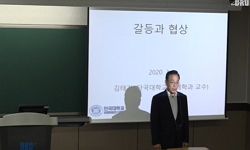The issue exerting the greatest influence in Korea is the low birth rate. It is important, therefore, to examine the countermeasures taken, and their effectiveness, by other countries suffering a declining birth rate and consequent aging population be...
http://chineseinput.net/에서 pinyin(병음)방식으로 중국어를 변환할 수 있습니다.
변환된 중국어를 복사하여 사용하시면 됩니다.
- 中文 을 입력하시려면 zhongwen을 입력하시고 space를누르시면됩니다.
- 北京 을 입력하시려면 beijing을 입력하시고 space를 누르시면 됩니다.
https://www.riss.kr/link?id=A105909576
- 저자
- 발행기관
- 학술지명
- 권호사항
-
발행연도
2018
-
작성언어
Korean
- 주제어
-
등재정보
KCI등재
-
자료형태
학술저널
- 발행기관 URL
-
수록면
131-133(3쪽)
-
KCI 피인용횟수
1
- DOI식별코드
- 제공처
- 소장기관
-
0
상세조회 -
0
다운로드
부가정보
다국어 초록 (Multilingual Abstract)
The issue exerting the greatest influence in Korea is the low birth rate. It is important, therefore, to examine the countermeasures taken, and their effectiveness, by other countries suffering a declining birth rate and consequent aging population before Korea. Such countries can be categorized according to their cultural background: the UK, Continental Europe, Scandinavia, and Asia. In Continental European countries, such as Germany and France, the employment rate of women is relatively low, whereas it is relatively high in the UK and Scandinavian countries. In Asian countries, such as Japan and Singapore, despite many policies instituting the work–family balance, a childcare infrastructure, and child allowance, little is being achieved, due to the specific culture of Asia and the social rejection of various family forms. However, it should not be forgotten that those countries succeeding in increasing the birth rate have implemented continuous policies for decades.
참고문헌 (Reference)
1 Kohler HP, "The Baby Bust: Who will do the Work? Who Will Pay the Taxes?" Rowman & Littlefield Publishers 48-109, 2006
2 "Statistics Korea"
3 World Bank Data, "Fertility rate, total (births per woman)"
4 Becker G, "An Economic Analysis of Fertility. In Demographic and Economic Change in Developed Countries" Columbia University Press 1960
5 Youngmoon Kim, "A study on the foreign policy and case study for the demographic cliff" 2016
1 Kohler HP, "The Baby Bust: Who will do the Work? Who Will Pay the Taxes?" Rowman & Littlefield Publishers 48-109, 2006
2 "Statistics Korea"
3 World Bank Data, "Fertility rate, total (births per woman)"
4 Becker G, "An Economic Analysis of Fertility. In Demographic and Economic Change in Developed Countries" Columbia University Press 1960
5 Youngmoon Kim, "A study on the foreign policy and case study for the demographic cliff" 2016
동일학술지(권/호) 다른 논문
-
- 한국모자보건학회
- 이은주
- 2018
- KCI등재
-
성조숙증 여아의 우울 및 성숙불안과 어머니의 우울 및 불안
- 한국모자보건학회
- 이민주
- 2018
- KCI등재
-
- 한국모자보건학회
- 이지윤
- 2018
- KCI등재
-
조산원 분만 산모의 분만통증, 분만통제감이분만경험지각에 미치는 영향
- 한국모자보건학회
- 이선옥
- 2018
- KCI등재
분석정보
인용정보 인용지수 설명보기
학술지 이력
| 연월일 | 이력구분 | 이력상세 | 등재구분 |
|---|---|---|---|
| 2027 | 평가예정 | 재인증평가 신청대상 (재인증) | |
| 2021-01-01 | 평가 | 등재학술지 유지 (재인증) |  |
| 2018-01-01 | 평가 | 등재학술지 선정 (계속평가) |  |
| 2017-12-01 | 평가 | 등재후보로 하락 (계속평가) |  |
| 2013-01-01 | 평가 | 등재 1차 FAIL (등재유지) |  |
| 2010-01-01 | 평가 | 등재학술지 유지 (등재유지) |  |
| 2008-01-01 | 평가 | 등재학술지 유지 (등재유지) |  |
| 2005-01-01 | 평가 | 등재학술지 선정 (등재후보2차) |  |
| 2004-01-01 | 평가 | 등재후보 1차 PASS (등재후보1차) |  |
| 2002-07-01 | 평가 | 등재후보학술지 선정 (신규평가) |  |
학술지 인용정보
| 기준연도 | WOS-KCI 통합IF(2년) | KCIF(2년) | KCIF(3년) |
|---|---|---|---|
| 2016 | 0.59 | 0.59 | 0.7 |
| KCIF(4년) | KCIF(5년) | 중심성지수(3년) | 즉시성지수 |
| 0.77 | 0.77 | 1.035 | 0.1 |





 KCI
KCI KISS
KISS





